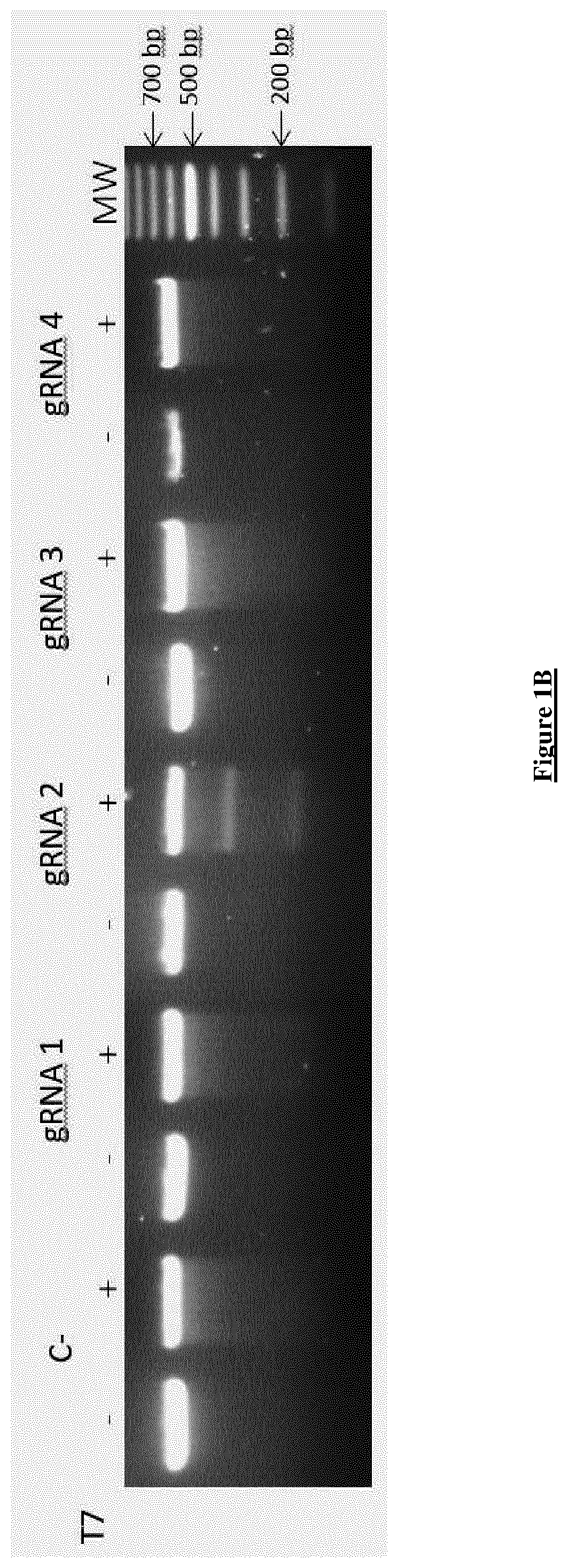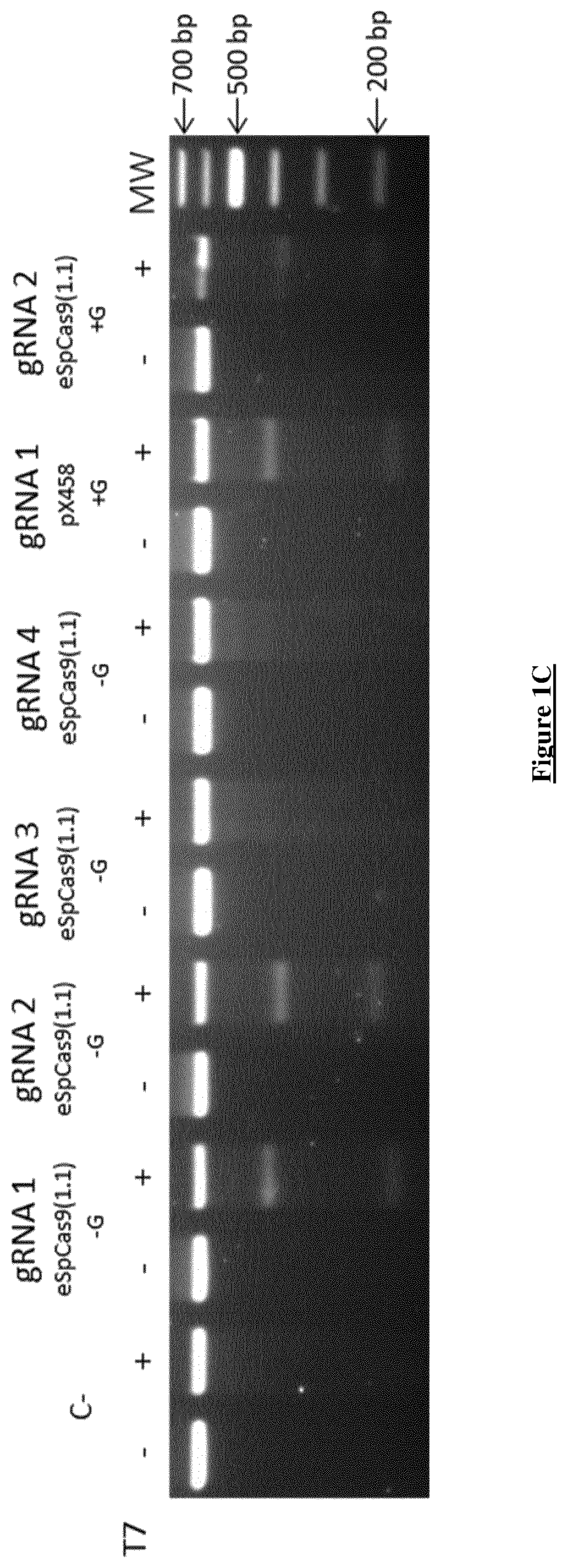Correction of the two most prevalent ush2a mutations by genome editing
- Summary
- Abstract
- Description
- Claims
- Application Information
AI Technical Summary
Benefits of technology
Problems solved by technology
Method used
Image
Examples
example 1
CRISPR / Cas9 Strategy for Correcting the Most Prevalent USH2A Mutations in Exon 13
[0250]In the present study, the inventors aimed to correct the two most prevalent mutations in USH2A (c.2276G>T and c.2299delG), both present in exon 13 and located 22 bp from each other (FIG. 1A).
[0251]Four different gRNAs surrounding both mutations were designed (gRNA 1-4) according to the presence of the canonical NGG PAM site, which is a requirement for SpCas9 recognition: gRNA 1 (SEQ ID NO: 1), gRNA 2 (SEQ ID NO: 2), gRNA 3 (SEQ ID NO: 3) and gRNA 4 (SEQ ID NO: 4) (FIG. 1A).
[0252]All four gRNAs were cloned into the “enhanced specificity” Cas9 plasmid (eSpCas9 (1.1), Addgene #71814). This plasmid co-expresses the gRNA and the eSpCas9 (1.1) with EGFP, which is linked to the C-terminal of eSpCas9 by a 2A peptide. This variant of the wild type Cas9 has been shown to induce DNA cleavage in human cells with significant reduction in off-targets, while maintaining a robust on-target activity (34). Because ...
example 2
s9 Mediated Correction of the c.2299delG Mutation in Patient's iPSC
[0268]Aiming at correcting the most prevalent USH2A mutation in patient's iPSC, an iPSC cell line (USH2A-USH-iPSC) from a patient presenting USH2 syndrome due to the homozygous mutation c.2299delG was used with this purpose (32).
[0269]First, a skin biopsy from the patient was performed under sterile conditions at the Centre of Reference for Genetic Sensory Disorders (CHRU Montpellier) following informed consent. Regional and national ethic committees accorded biomedical research approval under the authorisation number 2014-A00549-38. Human fibroblasts were cultured in AmnioMAX C100 basal medium supplemented with 10% decomplemented FCS (Lonza, Verviers, Belgium), 1% GlutaMAX (Gibco, ThermoFisher Scientific, Villebon sur Yvette, France), 1% penicillin-streptomycin-amphotericin B (Lonza) and 2% AmnioMax-C100 supplement (Gibco) at 37° C. under 5% CO2.
[0270]Next, to generate integration-free iPSCs, the fibroblasts cells f...
example 3
s9 Mediated Correction of the c.2276G>T Mutation in Patient's iPSC
[0280]To correct the USH2A most prevalent mutation in autosomal recessive retinitis pigmentosa (arRP), the inventors used an iPSC cell line (USH2A-RP-iPSC) from a patient presenting non-syndromic RP due to a compound heterozygous mutation (c.2276G>T and c.2299delG) (31).
[0281]This cell line was prepared following the same protocol as the one described in example 2, namely by a performing a skin biopsy from the patient, followed by culture of the fibroblasts and generating non-integrating iPSCs.
[0282]In this cell line, the inventors aimed at correcting the hypomorfic c.2276G>T missense variant by using the already validated gRNA 1 in combination with ssODN 1. For this purpose, USH2A-RP-iPSC cell line was nucleofected with the eSpCas9 (1.1)-gRNA 1 and ssODN 1 and GFP-single cell sorted was carried out 48 hours after nucleofection.
[0283]By contrast to the USH2A-USH-iPSC cell line, 68 clones (out of 288) from the USH2A-RP...
PUM
| Property | Measurement | Unit |
|---|---|---|
| Efficiency | aaaaa | aaaaa |
Abstract
Description
Claims
Application Information
 Login to View More
Login to View More - R&D Engineer
- R&D Manager
- IP Professional
- Industry Leading Data Capabilities
- Powerful AI technology
- Patent DNA Extraction
Browse by: Latest US Patents, China's latest patents, Technical Efficacy Thesaurus, Application Domain, Technology Topic, Popular Technical Reports.
© 2024 PatSnap. All rights reserved.Legal|Privacy policy|Modern Slavery Act Transparency Statement|Sitemap|About US| Contact US: help@patsnap.com










